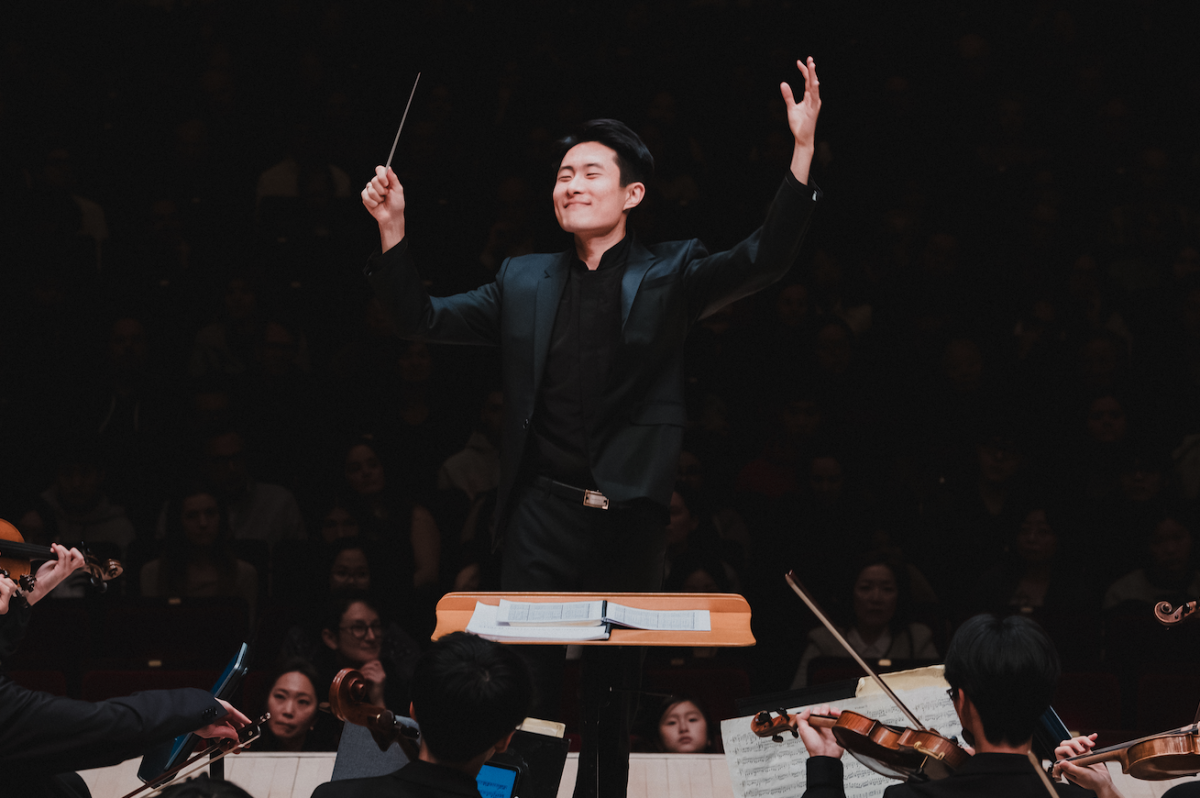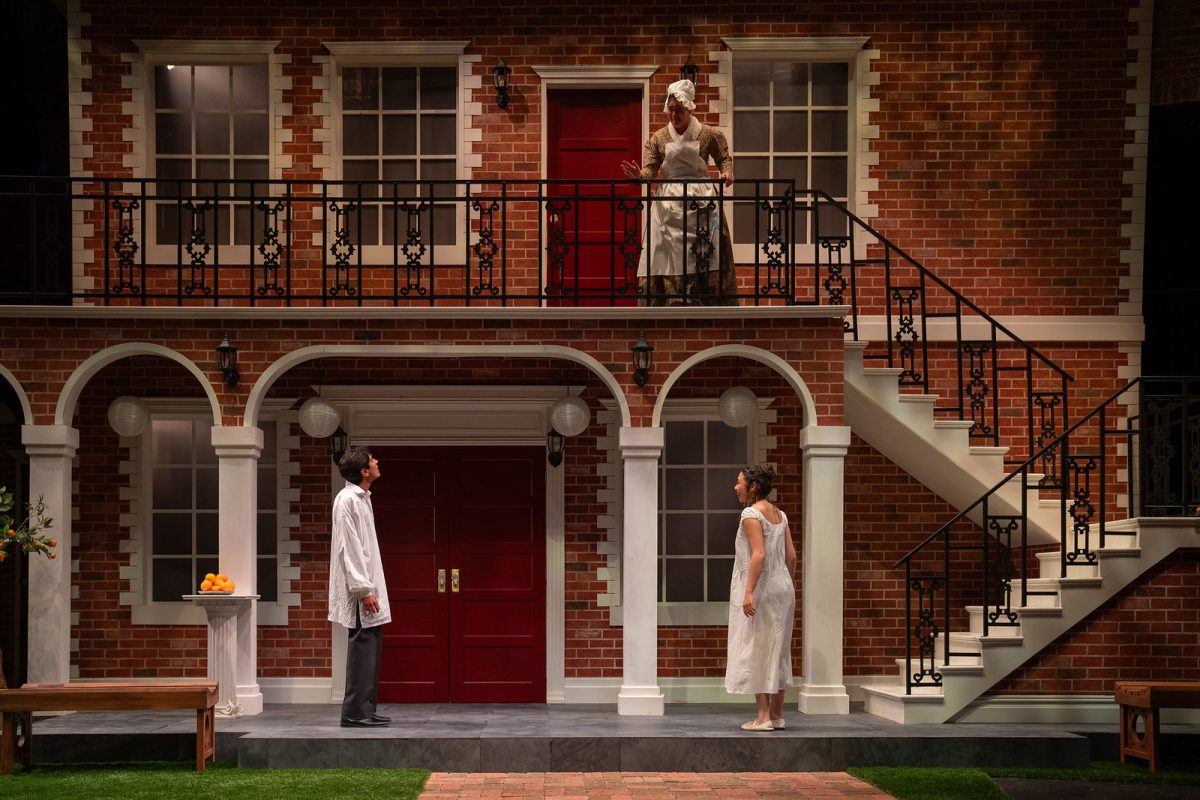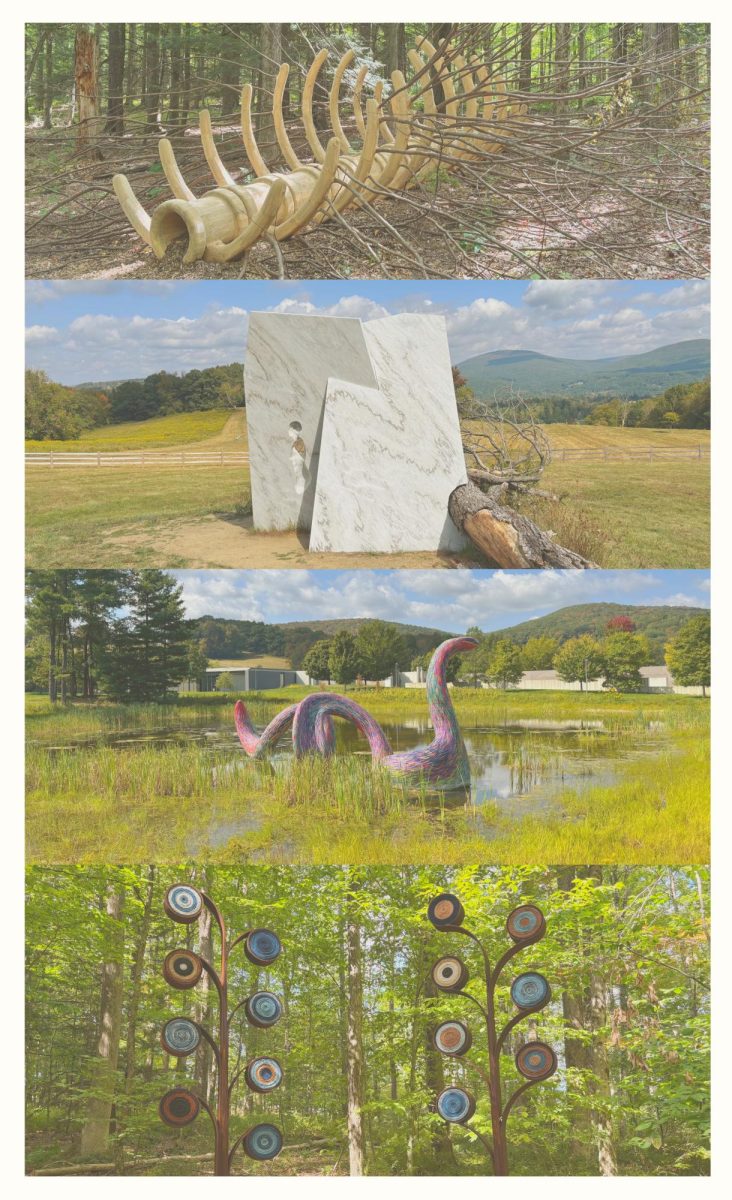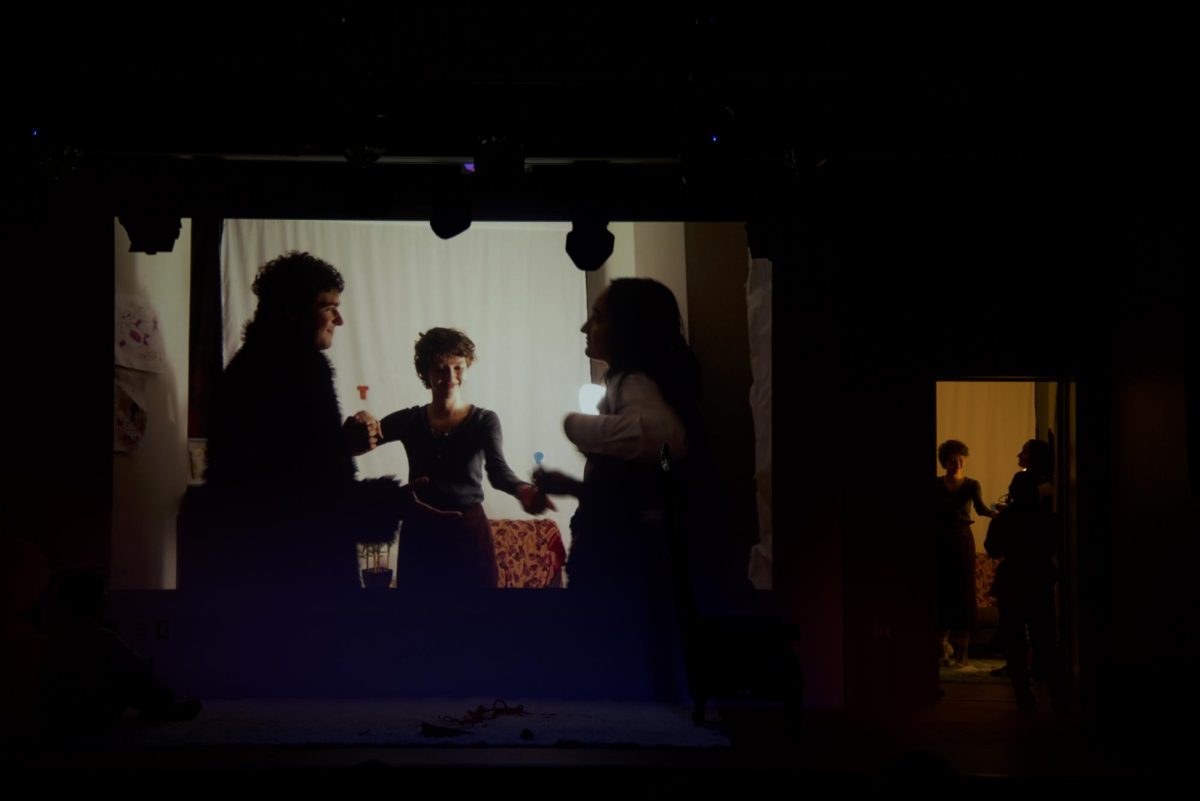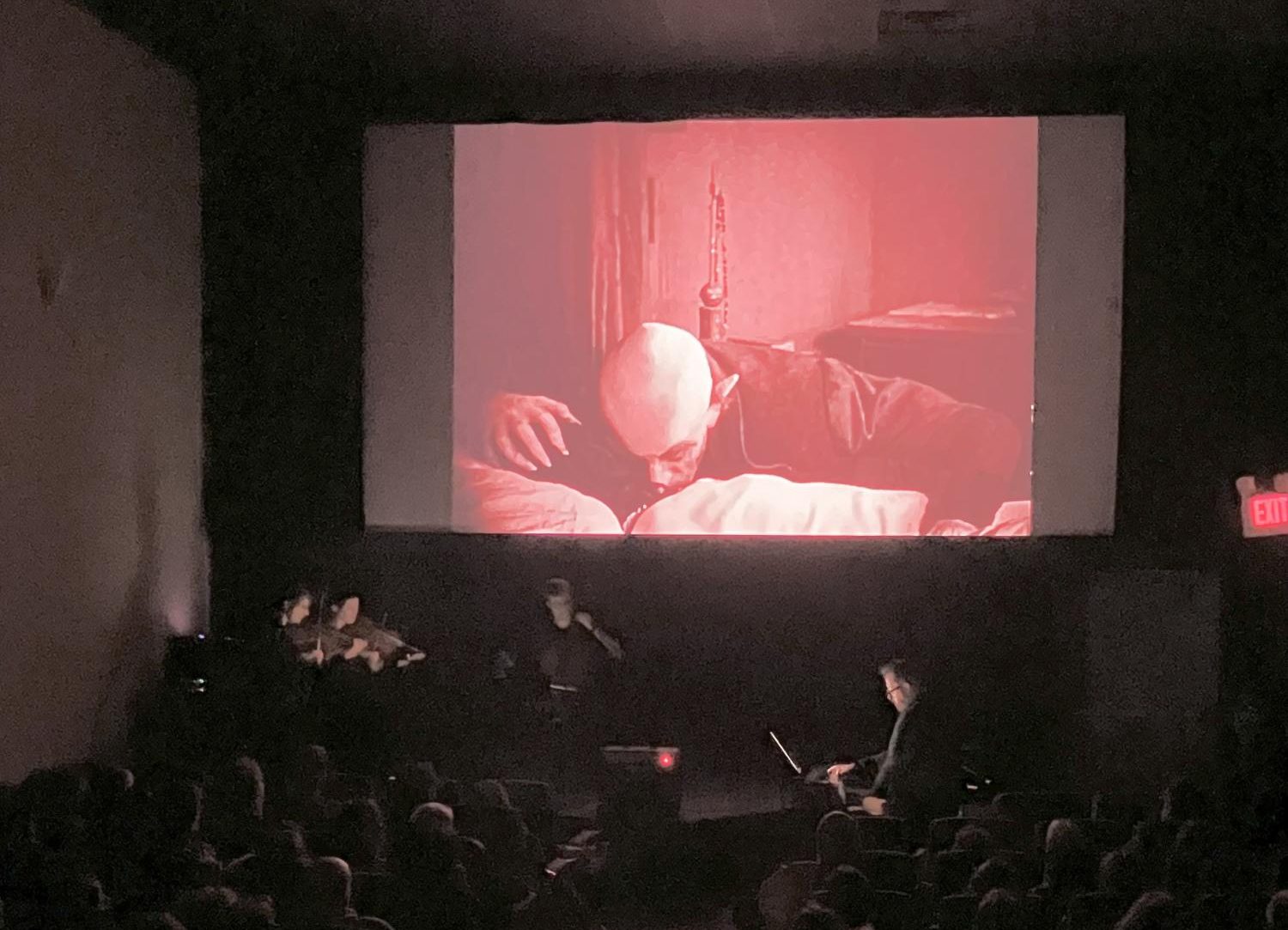
To celebrate Halloween, Images Cinema hosted a screening of the 1922 silent film Nosferatu on Oct. 29 — but it wasn’t your typical movie night. The sold-out event featured a live performance by the Andrew Alden Ensemble, which composed an original score to be played alongside the film.
The Andrew Alden Ensemble is a Detroit-based contemporary music group that plays electroacoustic scores to silent films. For the performance at Images, the ensemble included violinist Ben Kronk, violist Stephanie Price, cellist Alex Chambers-Ozasky, and Andrew Alden himself, who played both the piano and percussion.
Alden founded the ensemble after finishing his undergraduate studies at Berklee College of Music in 2013. “I was really interested in exploring the past through a musical voice but using a modern lens, as opposed to just being a document of the past,” Alden told the Record.
Before the dawn of synchronized sound, screenings of silent films were almost always accompanied by live music. However, most films didn’t have a consistent, singular score. And even when films did come with a score, performers often added their own spin to it.
“Silent films are really unique in that way,” Images Executive Director Dan Hudson said. “A lot of them are in the public domain, so you can kind of do whatever you want with them.”
Nosferatu follows Count Orlock — also referred to as Nosferatu — a vampire who becomes obsessed with Ellen, the wife of his estate agent. Hans Erdmann composed an initial score to accompany the film’s release in 1922, but it has largely been lost. Several reinterpretations for the film’s score have been composed in the intervening century since its initial release — including Alden’s.
Alden composed an entirely new score for the film that makes space for improvisation by the group’s musicians. “When we’re rehearsing it, we start to see what is working really well with the movie and what is not working,” he said. As a group they function more like a jazz ensemble than a classical group, changing aspects of their score as they play, Alden explained.
“About 85 to 90 percent is written and then, like, 10 percent [is] improvised,” Alden added. “There are some things we do differently at every performance.”
In the Images performance, the group sought to highlight the complexity of Count Orlock’s feelings towards Ellen. “We were really playing towards this dichotomy in the story of whether or not Nosferatu is in love with the female protagonist,” he said. As a part of the score, Alden composed a love theme for Ellen and her husband, but they also played on the idea that a twisted version of the love theme could be used to enhance Nosferatu and Ellen’s relationship, he said.
Historically, musicians have also often incorporated sound effects into their scores, Hudson said. “There were a couple times where they used instruments to approximate some sound effects to match what was happening on screen,” he said.
“There’s a scene where one of the characters is eating flies, so we had our violist play very, very high in her register to have this kind of manic-sounding, almost buzzing-fly sound,” he said. “Then there’s other very specific things, like a door opening will have a violin creak. There’s a scene where a character gets their thumb cut on a knife, and we use a very quick sound effect.”
Alden emphasized the value of sound effects in silent films. “That is our way of paying homage to what has come before — incorporating sound effects,” he said.
Student attendees expressed excitement about the novelty of the event. “It felt really enriching because we’re obviously in the middle of nowhere, and there’s not a lot of events like this that marry cinema and music in such an in-your-face way,” said Mariel Baez ’26, who attended the screening.
Samantha Alexander ’26, another attendee, said the event was a unique experience. “It felt like far more of an experience than normally going to the movies is,” she said. “It really felt like I was seeing a show.”
Alden highlighted the importance of keeping single-screen independent film theaters alive. “We have grand buildings for our artwork, for paintings and sculpture, and grand orchestral halls for music,” he said. “Movie theaters deserve the same kind of prestige and love as those spaces. [Independent cinemas] are where a huge part of our art form happens, and it doesn’t feel the same way when you go to a multiplex.”



